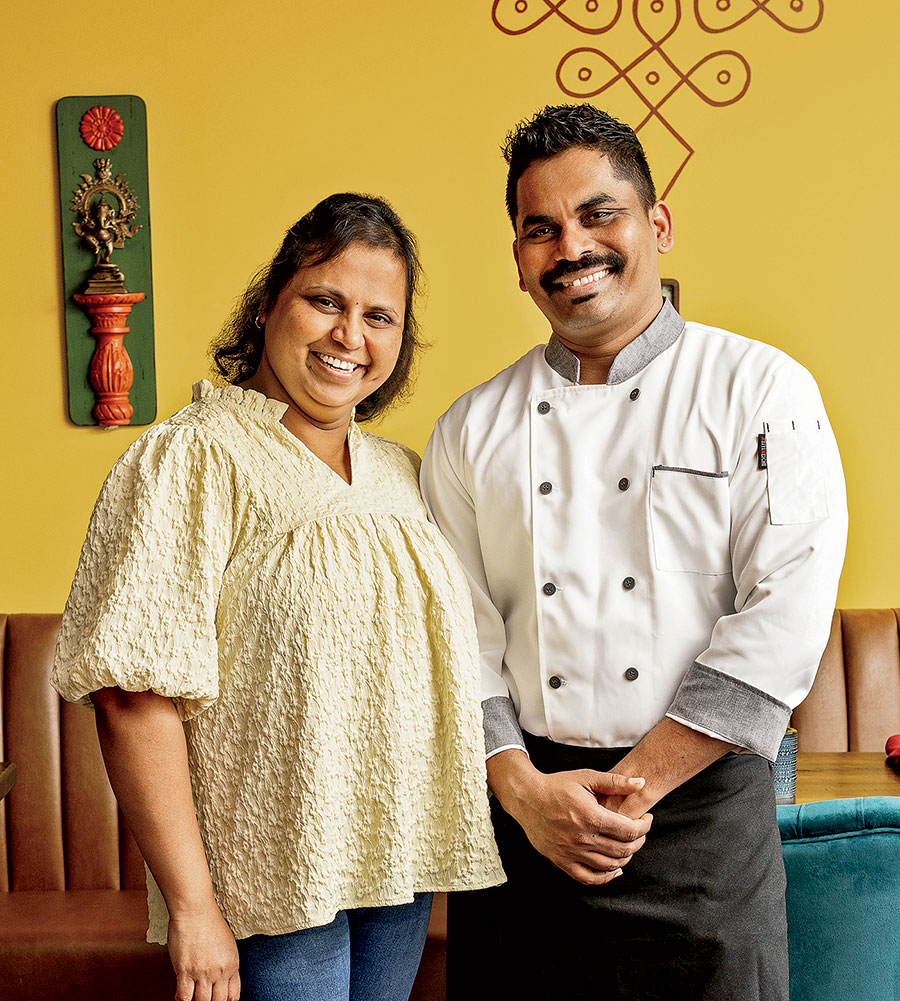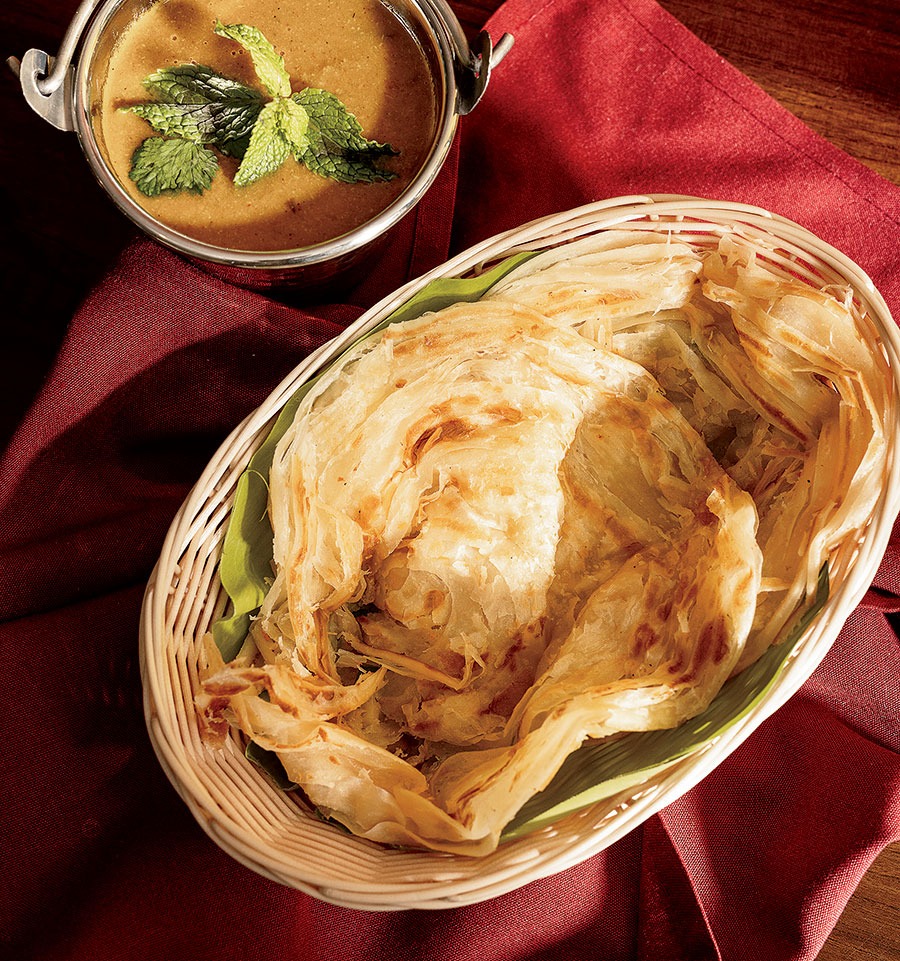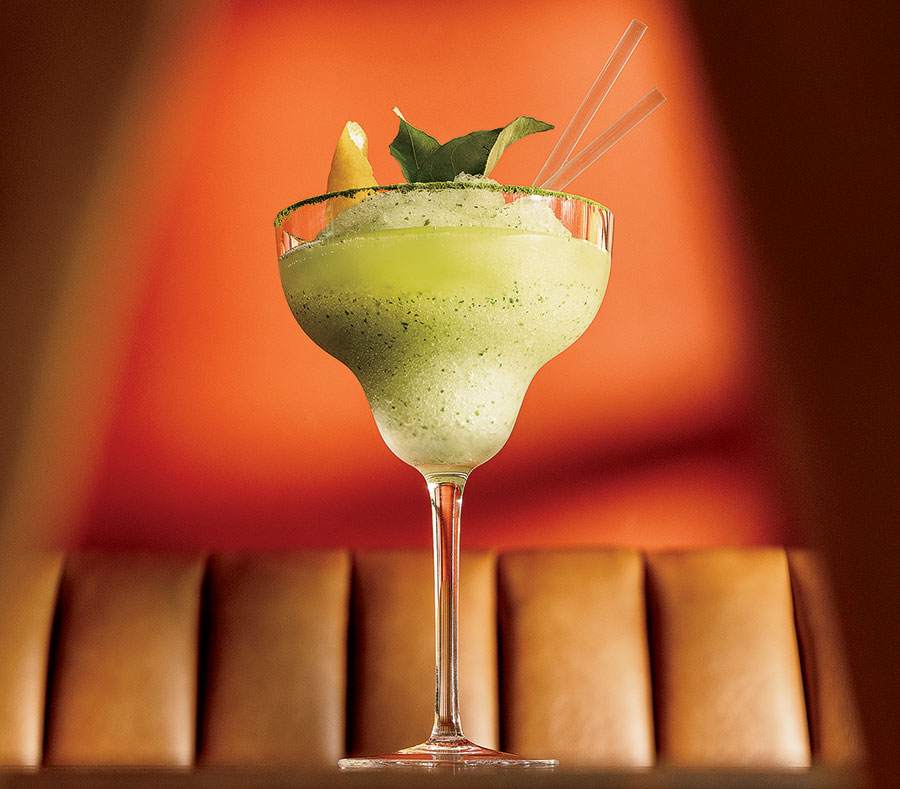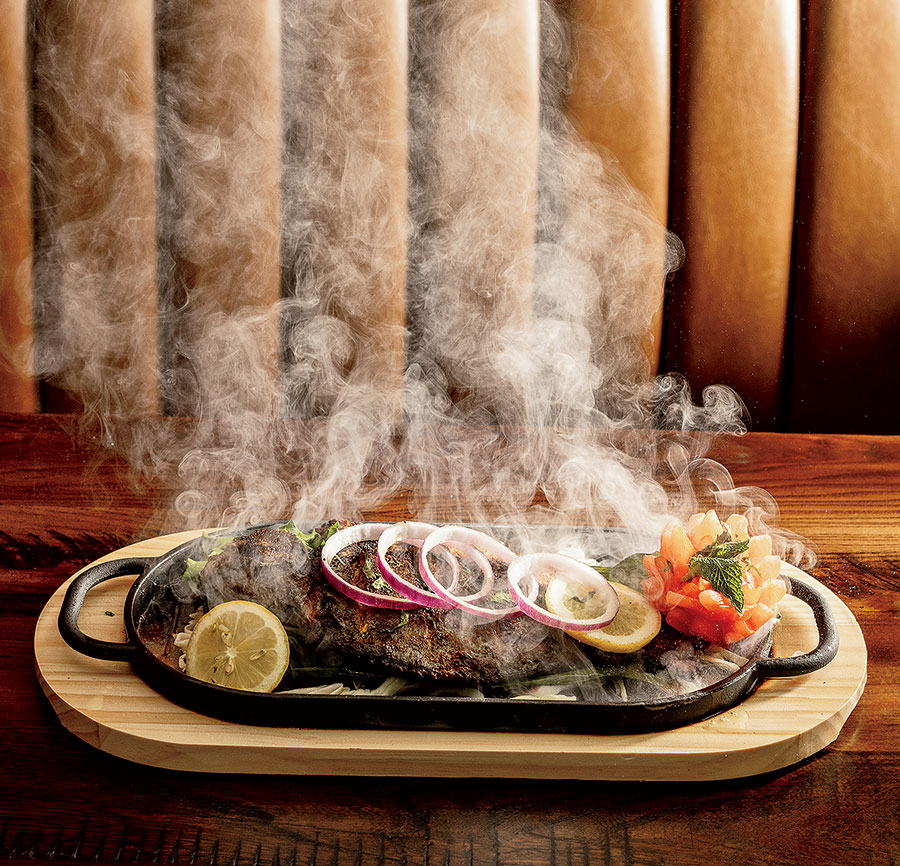There’s an exercise in journalism classes that goes like this: Spend five minutes writing about your favorite food, and don’t let the pencil leave the page. Then, working in pairs, read your essays aloud. Finally, you and your partner tell each other what you think the essays are really about. More often than not, the answers lie in one word: “home.”
When the married couple Revathi Manoharan and Vinoth Raju opened Thalaiva’s Indian Kitchen in 2018, they gave many immigrant Chicagoans a taste of home. The restaurant — forever packed, spilling out of its modest storefront space in downtown Park Ridge — cast a wide net over India. Raju’s kitchen churned out a broad complement of dishes, everything from saag paneer to chicken vindaloo, but a deeper read of the menu revealed that home for these two was specifically South India. Unlike most other Chicago-area Indian restaurants, Thalaiva’s (“the boss” in Tamil) showed its Southern soul with crisp dosas, fluffy idlis, and house curries enriched with coconut rather than dairy.
“South India” is a convenient shorthand for a big place. Just as the wholly different cuisines of New Orleans and the low country both contribute to what we think of as Southern food, the celebrated gastronomy of Chettinad in the east has little in common with the cooking from Kerala’s Malabar Coast. Neither tasted like the food the couple grew up with in Kongu Nadu, a landlocked region of the Indian subcontinent.
Early this year, they opened a second location of Thalaiva’s around the corner to celebrate that region’s cuisine, as well as Manoharan’s hometown of Coimbatore, her family farm, and even the modest hut her grandmother grew up in, here represented by dun-colored walls painted with neli kolam, a geometric pattern of curving lines thought to be auspicious. It is a bold statement of identity and a total boss move. Diners (even South Asians, I suspect) will find many unfamiliar dishes listed alongside the pan-Indian standbys included for good measure. Some flavors will be novel and exciting, others comforting in their plainspoken homeyness. There are a lot of soups, sour ferments, and grains like millet. When you need to turn up the temperature, mop up hot-hot if simply spiced curries with the flakiest-ever parotta breads.

What you will have in abundance are questions, which the staff may or may not be available to answer, depending on how busy the restaurant is. I’ve been three times, thrown a lot of darts at the menu, and still feel there are too many dishes I haven’t had, like millet porridge or deep-fried mutton balls. (It’s a crime against restaurant criticism that I haven’t tried the mutton balls; please forgive me.)
Yet I have tried a lot, enough to get you going on your Thalaiva’s adventure. The obvious starting point is also the best: the thali, served here, South Indian–style, on a banana leaf. Not only does it look nicer than a naked steel tray, but it makes for a better dining experience if you eat the traditional way, with your fingers. (That’s why you’ll see many guests availing themselves of the prominent hand-washing station.) Whatever means of transport you use, the nonveg thali option offers tastes of the kitchen’s signature dishes. Naatukoli kulambu, also called country chicken curry, is sweet with coconut, hot with chiles, and redolent of roasted cumin and coriander. Look for goat curry (notable for its velvet-textured meat), a fish curry in bright tamarind gravy, and potato poriyal (a dry curry featuring toasted spices and flaked coconut) among the many silver cups and piles. You’ll also find a taste of thalapakattu biryani. This is magic stuff, made from an aromatic short-grain rice called seeraga samba that has been cooked with so many seasonings it turns mahogany. It’s more akin to African jollof rice than Hyderabad-style biryani and is thrumming with flavor.

From there, you might add in road kadai kaalaan, a street food fave made from mashed mushroom and cabbage fritters simmered in tomato gravy, or a Kongu Nadu–style dosa made with millet and sprouted moong dal; it’s super tangy and nice with its mild coconut chutney. Or try some Chicken 65, snackable nuggets that taste great with a drink.
Speaking of drinks: There’s a full cocktail bar with kooky blender offerings, like a pale green curry leaf margarita that’s as icy as a Slurpee and packs a twangy punch. I’d also steer you to the Indian beers (there’s a wide variety offered, but try the Flying Horse in a 22-ounce bomber) and a tasty housemade sarsaparilla soda called nannari sarbeth.

This South Indian drink works well with all the dishes from the Kongu Nadu menu, which have more verve than the standards on offer. Maybe the best advice I can offer is to leave your comfort zone and try something new. I couldn’t tell you about the tandoori chicken here because the tandoori pomfret — a whole two-pound fish, split to the bone, rubbed with spice paste, blistered in the oven — was the centerpiece instead at our dinner, and it was grand.
I wish the menu were even more tailored to Kongu Nadu cuisine and that the servers and kitchen did a better job of pacing the meal. I’d love to get our appetizers, have the table cleared, then receive our entrées, but the food arrives in fits and starts. This may simply be growing pains as Raju and Manoharan figure this restaurant out.
The original Thalaiva’s is closed for remodeling, but if all goes to plan, it will reopen for breakfast in the morning and biryani and snacks at night. As Manoharan explained this and her vision for the new place to me, I was reminded of one dish, kollu rasam. The blandest thing I tried, it’s a porridge made from beady horse gram lentils, spices, and a bit of garlic. Yet there was something soulful and true about this dish, and I haven’t stopped thinking about it. “Ah, yes, horse gram lentils are very typical of Kongu Nadu, and they’re good for your health,” Manoharan said. After a beat, she added: “The ones we use, they come from my family’s farm.”



